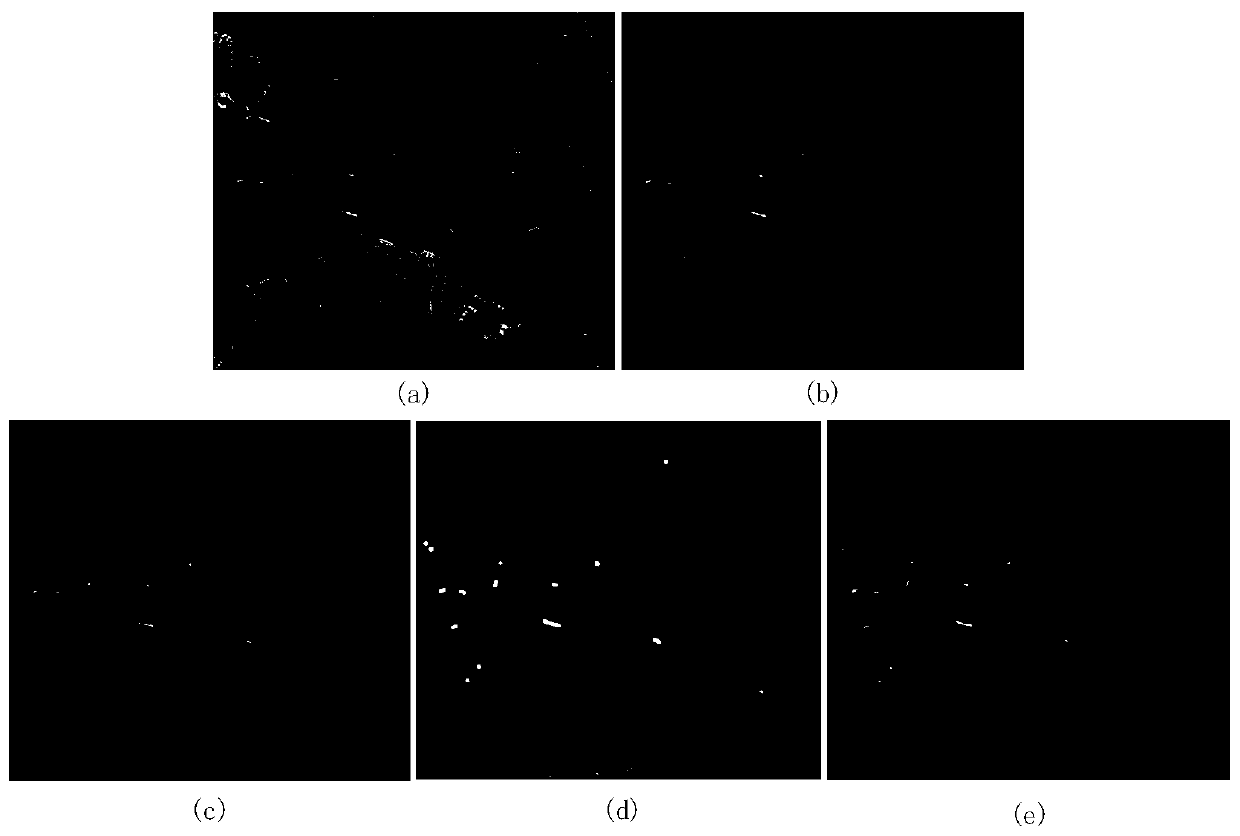Ship target detection method based on adaptive layered high-resolution SAR image
A target detection, high-resolution technology, used in instruments, character and pattern recognition, scene recognition, etc., can solve problems such as missing target pixels, target pixel leakage, target holes, etc., to maintain constant false alarm characteristics and eliminate mismatch risks. , the effect of avoiding computational burden
- Summary
- Abstract
- Description
- Claims
- Application Information
AI Technical Summary
Problems solved by technology
Method used
Image
Examples
Embodiment Construction
[0018] The embodiments and effects of the present invention will be described in further detail below in conjunction with the accompanying drawings.
[0019] reference figure 1 , The method of ship target detection based on adaptive layered high-resolution SAR image of the present invention is implemented according to the following steps:
[0020] Step 1. Obtain the original high-resolution SAR image, and use the maximum between-class variance method to preprocess the original high-resolution SAR image for sea and land segmentation to obtain sea and land segmentation image data;
[0021] The common sea-land segmentation method is to use prior knowledge to segment the SAR image. For example, the geographic coordinate information of the GIS data is matched with the SAR image, and then the sea-land segmentation is realized based on the coastline data in the database. But in practical applications, the matching error between GIS data and SAR image is several hundred meters, and the misma...
PUM
 Login to View More
Login to View More Abstract
Description
Claims
Application Information
 Login to View More
Login to View More - R&D
- Intellectual Property
- Life Sciences
- Materials
- Tech Scout
- Unparalleled Data Quality
- Higher Quality Content
- 60% Fewer Hallucinations
Browse by: Latest US Patents, China's latest patents, Technical Efficacy Thesaurus, Application Domain, Technology Topic, Popular Technical Reports.
© 2025 PatSnap. All rights reserved.Legal|Privacy policy|Modern Slavery Act Transparency Statement|Sitemap|About US| Contact US: help@patsnap.com



